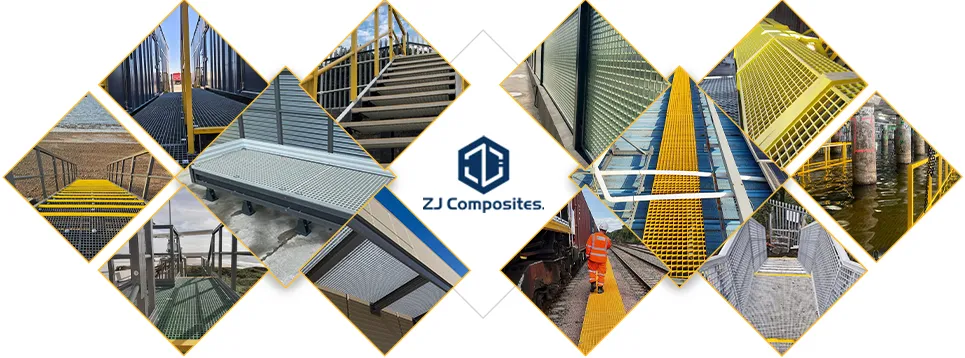loading...
- No. 9, Xingyuan South Street, Dongwaihuan Road, Zaoqiang County, Hengshui, Hebei, China
- admin@zjcomposites.com
- +86 15097380338
- Welcome to visit our website!
GRP Sectional Tanks for Efficient Water Storage and Distribution Solutions
Understanding GRP Sectional Tanks A Comprehensive Overview
When it comes to the storage of water and various liquids, GRP (Glass Reinforced Plastic) sectional tanks play a significant role in various industries, from municipal water supply to commercial and industrial applications. They offer a modern solution that combines efficiency, durability, and versatility, making them a preferred choice for many organizations. This article aims to delve into the key features, advantages, applications, and considerations associated with GRP sectional tanks.
What is a GRP Sectional Tank?
GRP sectional tanks are prefabricated water storage tanks made from glass-reinforced plastic. They are composed of modular sections that can be assembled on-site, making them suitable for a wide range of storage needs. The sectional design allows for customization in size and shape, catering to different specifications and site constraints. These tanks are typically lightweight yet robust, ensuring easy installation and longevity.
Advantages of GRP Sectional Tanks
1. Corrosion Resistance One of the primary advantages of GRP is its resistance to corrosion. Unlike metal tanks, GRP does not rust or degrade when exposed to harsh environmental conditions or corrosive substances. This property makes them ideal for long-term outdoor installation.
2. Low Maintenance GRP tanks require minimal maintenance. The non-corrosive nature of the material means that routine inspections are often sufficient, reducing the need for frequent repairs or replacements.
3. Lightweight Construction GRP tanks are much lighter than their concrete or steel counterparts. This characteristic facilitates easier transportation and installation, reducing labor costs and installation time.
4. Customizable Design The modular nature of sectional tanks allows for highly customizable designs. They can be configured to meet specific volume requirements and can be expanded or modified according to changing needs.
5. Thermal Insulation GRP tanks provide excellent thermal insulation, helping to maintain the temperature of the stored liquids. This feature is particularly beneficial in preventing algal growth in water supplied for drinking and other uses.
6. Cost-Effectiveness While the initial investment might be higher than some traditional tank options, the overall lifecycle cost of GRP sectional tanks tends to be lower due to their longevity, low maintenance requirements, and energy efficiency.
Applications of GRP Sectional Tanks
grp sectional tank

GRP sectional tanks are versatile and can be found in various sectors
- Water Supply and Storage Municipalities utilize GRP tanks for the storage and distribution of potable water. Their ability to hold large volumes makes them suitable for town and city water networks.
- Industrial Use Many industries, including chemical and food processing, rely on GRP tanks for the storage of raw materials, chemicals, and other liquids. Their inert nature ensures that they do not react with the stored substances, safeguarding product integrity.
- Fire Protection Systems GRP tanks are used for fire water storage in buildings and industrial facilities. They can be designed to meet local fire safety regulations, ensuring that adequate water supply is available in emergency situations.
- Agricultural Applications Farmers use GRP tanks for irrigation and livestock watering. Their durability and resistance to environmental conditions make them an attractive option for agricultural needs.
Considerations When Choosing GRP Sectional Tanks
While GRP sectional tanks offer numerous advantages, there are some factors to consider before making a selection
- Site Conditions Evaluating the site conditions is crucial, as the installation location can affect the tank's performance and longevity. Consider factors like soil type, environmental conditions, and accessibility.
- Regulatory Compliance Ensure that the chosen tank meets all local regulations and standards for water storage, especially if it is intended for potable water applications.
- Installation Expertise Proper installation is vital for maximizing the benefits of GRP tanks. Engage experienced professionals to ensure that the tank is assembled correctly to avoid leaks or structural issues.
Conclusion
In summary, GRP sectional tanks represent a modern and efficient solution for liquid storage needs across various sectors. Their advantages in terms of corrosion resistance, low maintenance, and customizable design make them an appealing choice over traditional storage methods. By understanding the specific requirements and carefully considering the factors involved, organizations can leverage the benefits of GRP sectional tanks to enhance their operations and ensure reliable liquid storage. As industries continue to innovate, the demand for such adaptable and resilient storage solutions is likely to grow, solidifying GRP sectional tanks' role in modern infrastructure.
-
The Rise of FRP Profiles: Strong, Lightweight, and Built to LastNewsJul.14,2025
-
SMC Panel Tanks: A Modern Water Storage Solution for All EnvironmentsNewsJul.14,2025
-
GRP Grating: A Modern Solution for Safe and Durable Access SystemsNewsJul.14,2025
-
Galvanized Steel Water Tanks: Durable, Reliable, and Ready for UseNewsJul.14,2025
-
FRP Mini Mesh Grating: The Safer, Smarter Flooring SolutionNewsJul.14,2025
-
Exploring FRP Vessels: Durable Solutions for Modern Fluid HandlingNewsJul.14,2025
-
GRP Structures: The Future of Lightweight, High-Performance EngineeringNewsJun.20,2025
